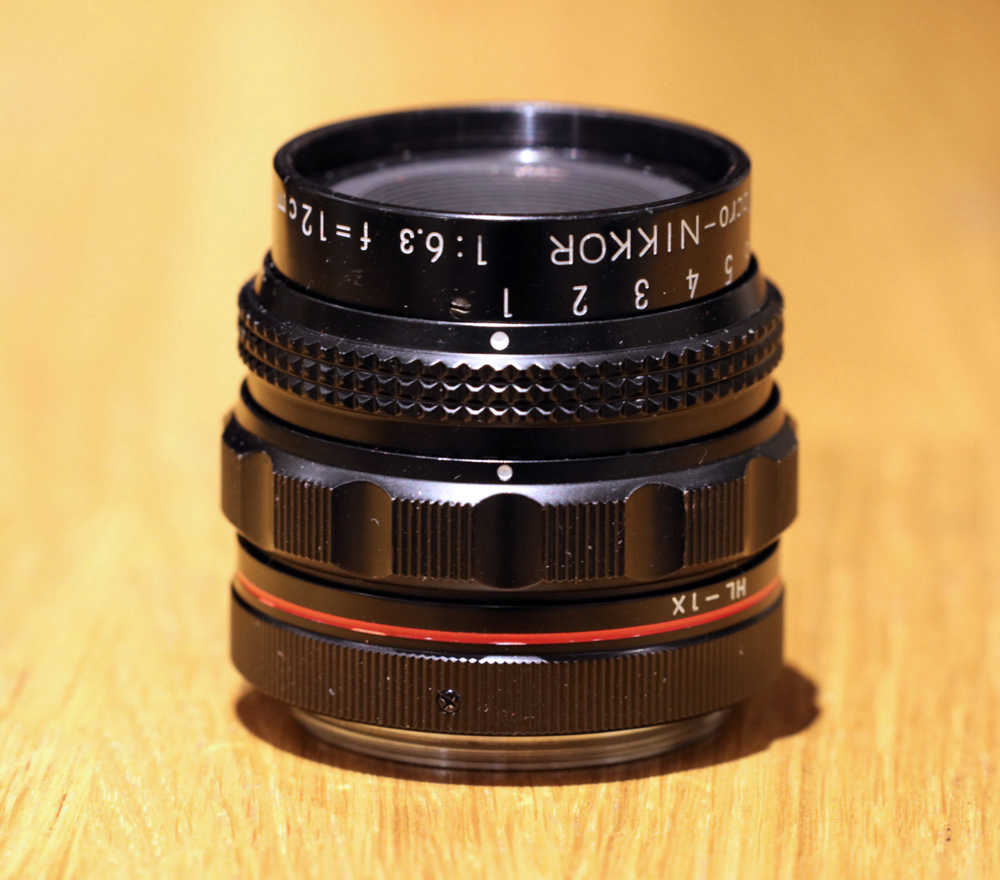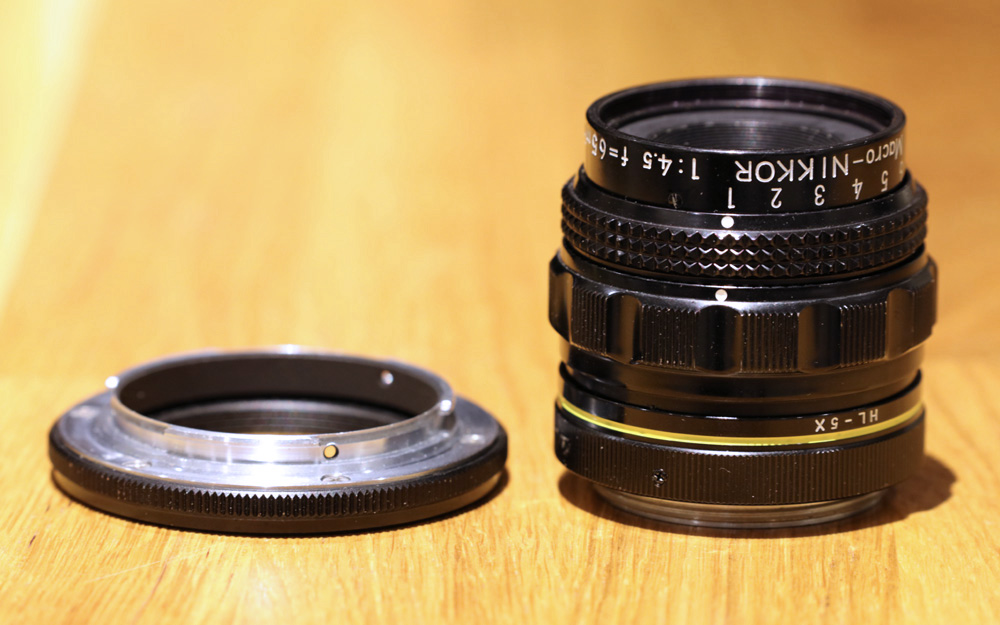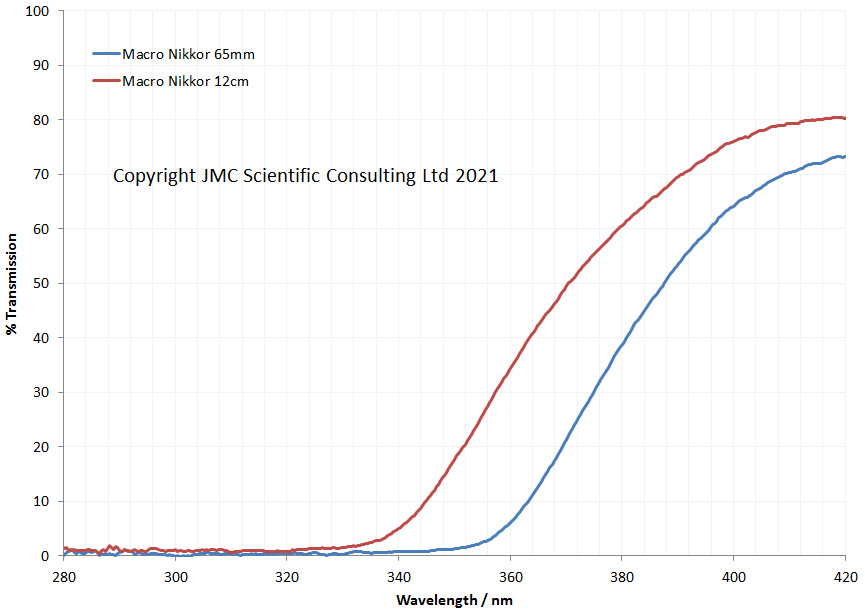As researching the photographic imaging process is part of my work, I am lucky enough to have access to a number of amazing lenses. Today I share with you the Nikon Macro Nikkor 65 mm and 12 cm lenses. These are not to be confused with Nikons usual macro lenses (actually Nikon calls these Micro Nikkors), the Macro Nikkors were developed for the Multiphot large format photomacrography and photomicrography system. Confused yet? If so don’t worry, basically they are M39 threaded, completely manual lenses, designed for close up work with a bellows. I wont share much about their background here, as there has been plenty written already about them (for example, see here).
Why my interest in them? Well, they are great macro lenses, with a bit of a reputation among photographers, and as always I am interested in learning more about the more unusual pieces of equipment. As always I’m also interested in whether or not lenses have the potential for use with UV imaging. I was recently fortunate enough to be able to get two of the four that were made – the 65mm and 12cm ones – along with an adapter to fit them to Nikon bayonet mount for mounting on a normal camera. Here’s how they look. First the 12cm.

And the 65mm one along with the adapter.

What’s their image quality like. As a quick test shot here’s a close up of a flower, taken with the 65mm one on bellows, using one of my Canon EOS 5DSR cameras and with ambient light in the room. This was pretty much the full frame, but reduced in resolution for sharing online.

And now a crop from the original of the image above, shown at the actual pixel resolution of the image.

Given this was done with ambient light rather than flash, so the exposure time was 4 seconds, I’m quite happy with the quality it produced.
How did they look for UV transmission? As always I test my lenses with my Ocean Insight FX spectrometer for transmission between 280nm and 420nm, and here’s how they performed.

Not the best for UV transmission, although the 12cm one has more reach than the 65mm one. Not hugely surprising, given the optical coatings they have, and their overall construction. C’est la vie, although they would still be potentially useful in the 360nm to 400nm range.
Bit a brief update today, but back to work now. This cutting edge science wont do itself you know. Thanks for reading and if you would like to know more about this or other aspects of my work, you can reach me here.
